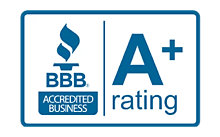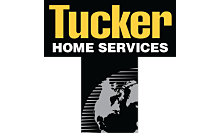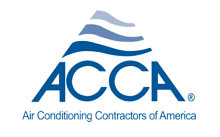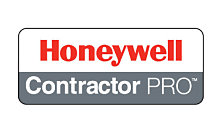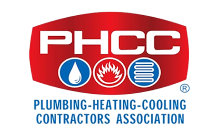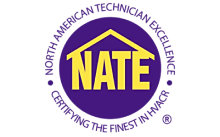Indianapolis Sewer Line Replacement Service
Sewer lines receive some extra protection underground, but this doesn’t mean they are susceptible to damage. Burst pipes, collapsed pipe walls, and cracked pipes occur for a number of reasons. Clogs can also form within the pipe. All these issues create problems back in the home and need to be remedied to restore good drainage.
When an underground pipe is damaged, repairing sewer lines is not always possible. Given the age and condition of sewage pipes, it may not make sense to repair sewer lines. Sewer line replacement is preferred to eliminate recurring issues and pipe problems caused by age or poor condition.
When it is time to skip line repair for sewerage pipes and move on to pipe replacement, Central Indiana homeowners turn to Mr. Plumber for trustworthy services they can count on. With years of experience in the line replacement for sewer pipes, our plumbers perform traditional and trenchless sewer pipe installations that eliminate the hassles caused by old and damaged pipe.
Request a free estimate to learn more about our sewer replacement services in Indianapolis.
Prior to Sewer Line Replacement
Central Indiana homes have two main components to their plumbing systems: supply plumbing and drainage plumbing. Supply pipes move fresh water into the home for use when called for by taps. Sewage pipes carry waste and wastewater away from the home and into the public sewer or private septic tank.
The main sewer pipe is burdened with the removal of all waste that runs down the drains of the home. Clogs in the line or damage to the pipe put a wrench in this process, disrupting good drainage. Homeowners are often alerted to the need for sewer line repair or replacement due to slow drains, gurgling noises from drains, water backup, pooling waters near floor drains, and unexplained puddles out on the lawn. Pipe repair may be possible to solve the issue, especially if a simple clog is to blame. However, line repair is not a good solution when the pipes have sustained damage or degradation.
To determine whether repair replacement options exist, plumbers use video inspection to check inside buried sewer lines. We feed a video camera through the drain line, down into the sewer line, until we arrive at the location of the problem. With this tool, we are able to see damage to buried lines and determine the extent of the problem causing drainage symptoms inside the home. Upon completion, we are able to assess whether repairing sewer line issues is appropriate or if sewer line replacement is the preferred choice.
Do My Sewer Lines Need to Be Replaced?
It’s hard to tell whether sewer lines need to be repaired or replaced because, generally, the same symptoms are noticed in either situation. Once the issue is uncovered, it is typically easy to see if it is going to be a line repair job or a pipe replacement project. Sewer line repair is only considered if a repair is able to correct the problem and prevent it ongoing. If it is likely that a repair will not hold up and the issue will recur, pipe replacement should be performed.
Major damage to a sewer line produces some symptoms that are different than those resulting from a clog. The symptoms below can help you identify the need for sewer replacement vs. repair.
If your yard has suddenly developed puddles over the sewer line, yet you have had no rain, this significant volume of water may have come from a sewer pipe leak. With such a substantial leak, the pipe is no longer capable of handling drainage from the home.
When the smell of sewer gas is present in the home or around your property, the sewer line problem is probably more severe than a clog. Indoors, sewer gas exposure is a potentially deadly problem – the sewer pipe issue needs to be addressed promptly.
When all drains around the home appear to drain slowly, there is definitely a clog, at minimum, within the sewer line. It is possible that more substantial damage has occurred to the pipes, creating the blockage.
When these symptoms pop up, it’s time to get with a plumber. Sewer line replacement is an extensive task compared to clog removal and drain cleaning, but a qualified plumber handles it with ease. Depending on several factors, it may be necessary to perform sewer line replacement by trenching the yard. In many situations, it is possible to use trenchless sewer pipe replacement methods to minimize damage and disruption.
Sewer Line Emergency? Calls Are Answered 24/7/365
Sewer Line Damage Causes
A few main threats exist that are the culprit behind many damaged sewer pipes, creating the necessity of pipe replacement.
Tree roots have been a longtime an enemy of the underground sewer pipes. These roots gravitate towards water sources, of which the buried sewer line is often the closest option. Some roots are powerful enough to crack the pipe and access the water supply inside.
The soil that surrounds a buried sewer pipe can be greatly affected by shifts in outdoor temperature. When temperatures rapidly change from cool to warm, soil may shift, which displaces the underground pipe and causes it to break.
Grease and other debris can build up on pipe walls, forming a restriction as it accumulates. Inappropriate objects flushed down toilets are sent down drains can become stuck in pipes to form clogs.
Older materials used for home sewer pipes include cast iron, clay, and PVC. These materials break down over the years, which weakens the pipe to the point of collapse.
These issues, as well as wear and tear, lead to unrepairable pipe damage in many cases. When it is necessary to replace a sewer pipe, choose a qualified plumbing company to explain your options and perform the work.
Sewer Replacement Choices for Central Indiana Homes
Is Traditional or Trenchless Sewer Replacement the Best Choice?
Where your home is located and how your sewer system is situated will come into play when determining the methods chosen to complete your sewer replacement project. Our plumbing professionals perform a full inspection of the sewer system, which allows us to determine if traditional or trenchless sewer replacement is viable. Some homeowners may be able to choose between both options, while others may have but only one.
Today, trenchless sewer replacement is often chosen because it is a far less invasive choice versus trench methods. Traditional sewer line replacement involves heavy digging and disruption to the lawn, landscaping, and sometimes even nearby pavement, such as driveways or roads. Once installation is complete, it can take quite a while to return the surface of the property back to its original state. Because traditional methods remove old sewer pipe, the process creates waste that is added to landfills.
Many homeowners and plumbers alike prefer trenchless sewer replacement, as it is quicker and less disruptive to the property. There is no need to dig up the old pipe in the yard. Trenchless methods make it easy to replace pipes that run under structures.
Our Guarantees
No Guesswork
When we say "This is how much it is" that's how much it is. Period.
"It Will Work"
No excuses or stories, just service when you need it!
100% Money-Back Satisfaction
We'll make it right or remove the system and return 100% of your money.
Client Respect
If we dirty it, we'll clean it. If we damage it, we'll fix it. Plain and simple.
Safe and Secure
The right company and the right people in your home, ensuring your job is done right and your peace of mind is protected.
What Our Clients Are Saying
Award Winning & Industry-Leading
Who Is MAX?
Max is an important part of our team. He is more than just a cartoon character. Max represents our commitment to quality work, craftsmanship, pride, and passion to serve our clients and community. We celebrate this mentality through Max because these are the values that drive us to be the area’s most complete and comprehensive home service company. So, now when you see Max, you’ll know the story behind the man with the mustache!


